#HOUSE OF PAIN Edition Adidas 80s
Explore tagged Tumblr posts
Text

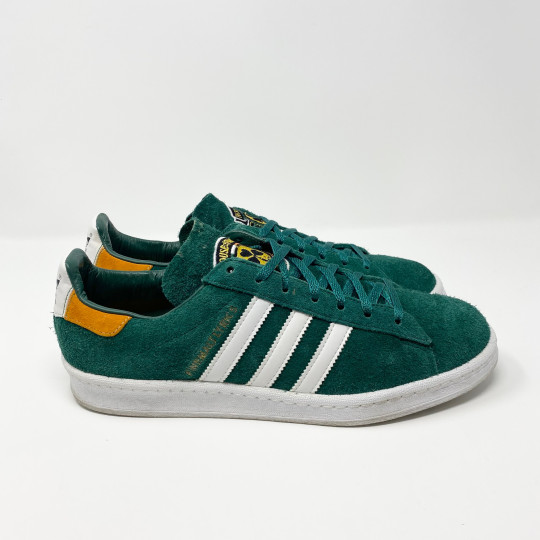
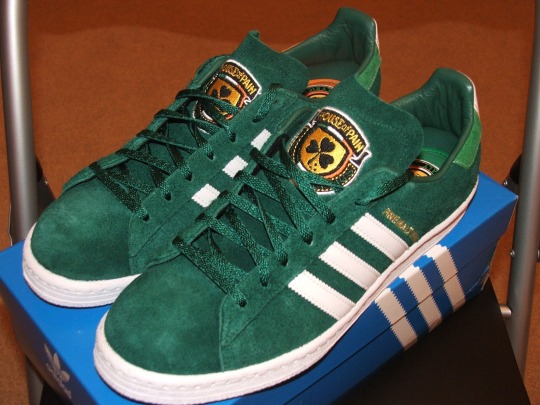
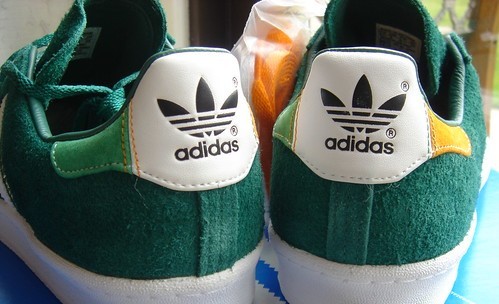
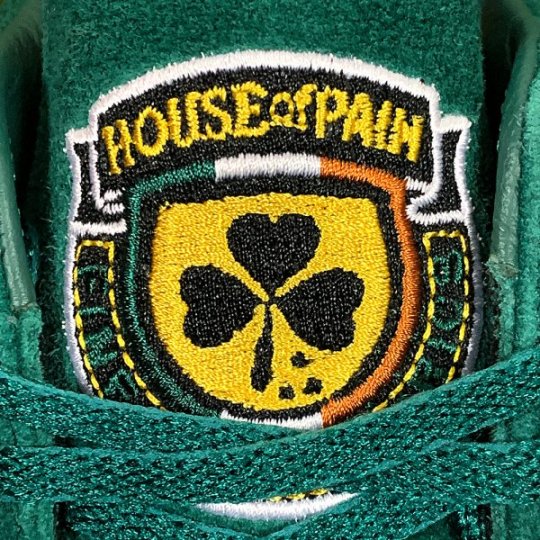
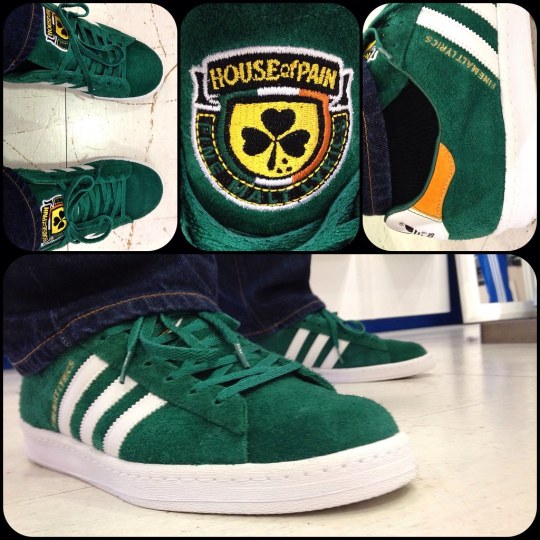
FOR HARDCORE HOUSE OF PAIN FANS ONLY -- "PUT ON YOUR SHITKICKERS AND KICK SOME SHIT!"
NOTE: True story, I'll never forget running into a pair of these out in the wild many years ago at a Downtown L.A. urban wear/style/fashion boutique, but, alas, they weren't in my size. DAMN!! Talk about the best AND worst luck ever!
PIC(S) INFO: Mega-spotlight on the super-hip and awesome HOUSE OF PAIN-edition Adidas Campus 80s, released exclusively on Saint Paddy's Day in 2009.
OVERVIEW: "The Campus 80’s were released in the early 1970’s, however its roots were founded in 1980’s hip-hop and popularised by the BEASTIE BOYS in the 1990’s. The Campus 80’s are a tangible time capsule representing the rap and the B-Boy culture of that era.
These Campus 80’s are named after the American hip-hop group HOUSE OF PAIN and were released March 17th 2009. The Green, White and Orange colour way is inspired by the band’s Irish heritage and also coincides with St Patricks Day. The group’s iconic white outlined crest is embroidered on the tongue and centred is a Three-Leaf Clover. "Fine Malt Lyrics" another name for their debut album ‘is stitched in gold thread across the upper side and can also be found at the bottom of the crest in green stitching. The deep vintage green suede upper and white sole completes this classic look.
The alternating Green insole on the left foot, and Orange on the right is consistent with the Irish flag colours. Adidas brought the shoe to life for hardcore HOUSE OF PAIN fans but can also be enjoyed by those who would purchase these Gazelles for the love of colours and design. Generally the Campus 80’s tend to be quite clean in design yet the silhouette has been released in a variety of colours in varying styles and prints ensuring relevance yet keeping within its prototypal components."
-- FRIXSHUN (sneakers, trainers, kicks aficionados), written by Natiki Collins
Sources: Flickr, Pinterest, https://frixshun.com/adidas-campus-80s-house-of-pain, etc...
#HOUSE OF PAIN Edition Adidas 80s#HOUSE OF PAIN Adidas#HOUSE OF PAIN#Hip-hop Culture#Hip-hop Fashion#Hip-hop Style#West Coast hip-hop#East Coast hip-hop#St. Patrick's Day#1992#Fine Malt Lyrics Adidas 80s#Adidas Kicks#HOUSE OF PAIN Adidas 80s#Fine Malt Lyrics 80s#Fine Malt Lyrics#HOUSE OF PAIN 1992#Adidas 80s Shoes#Adidas Shoes#Hip-hop/rap#Hip-hop/Rap#HOUSE OF PAIN Fine Malt Lyrics#Saint Patrick's Day#Fine Malt Lyrics 1992#Adidas#Saint Paddy's Day#Street Style#90s hip-hop#American Style#Hip-hop
8 notes
·
View notes
Text
The Jenny Lewis Experience
The New York Times July 24, 2014
A version of this article appears in print on July 27, 2014, Page 18 of the Sunday Magazine with the headline: The Jenny Lewis Experience.
By Jeff Himmelman

“They’d put the ‘Do Not Disturb’ sign on,” Jenny Lewis said. We were sitting in a restaurant in Laurel Canyon, not far from her home, and she was describing her early childhood with parents who made their living performing as an itinerant Sonny-and-Cher-style lounge act called Love’s Way. “We lived in hotels,” she said. “My sister and I, they would just keep us in the hotel room, and they’d go down and play.” When Lewis was born in 1976, her parents were doing a stand at the Sands. They split up when she was 3, and her mother — herself the daughter of a dancer and a vaudeville performer — took Jenny and her sister to Van Nuys, in the San Fernando Valley, where she worked as a waitress and struggled to keep her family afloat. “We were on welfare,” Lewis said, before describing the day their fortunes changed, when an agent picked young Jenny out of a crowd at her preschool. “I think mostly because I was a redhead,” she said. “And I was a weird little kid, a weird little tomboy.”
She soon landed her first commercial, for Jell-O, and came under the wing of Iris Burton, an eminent children’s agent who represented River and Joaquin Phoenix and Fred Savage. Lewis started working steadily in commercials, television (“The Golden Girls,” “Growing Pains,” “Mr. Belvedere”) and film (“The Wizard,” “Troop Beverly Hills,” “Pleasantville”), living the surreal and somewhat communal life of a child star in the ‘80s. She spent her days being tutored on set and her evenings at places like Alphy’s Soda Pop Club in Hollywood, which catered exclusively to kids in the industry. At a party there when Lewis was 10, the actor Corey Haim handed her a cassette tape with Run-D.M.C. on one side and the Beastie Boys on the other. “There have been a couple of cassette tapes that have changed my life,” she said, “and that was the first one” — the tape that got her hooked on hip-hop, which eventually led her to songwriting.

I asked Lewis when she first fully realized the role she played in her family, the depth of their dependence on her. “Eight years old,” she said. “I remember the moment. That’s a pretty big thing for a kid to realize. And I remember the power in that.” By the time she was 14 or 15, with nobody to answer to, she could be as wild as she liked as long as she showed up to work and hit her marks. “I was up for it, honestly,” she said. “I loved the work and I loved the people, and it kind of prepped me for what I do now.”
What Lewis does now, the music she makes, is hard to characterize. She is often compared with Joni Mitchell and Emmylou Harris, and there is a kind of timelessness to the way she writes and sings. But the throwback stuff doesn’t quite capture her. Among some music fans — including many other well-known musicians — Lewis is considered a kind of indie goddess, a stylish performer who defies genre and salts her songs with a sly and off-kilter intelligence. Her first band, Rilo Kiley, signed a major-label deal with Warner Bros. Records in 2005; her first side project, the Postal Service, led by Ben Gibbard of Death Cab for Cutie, sold more than a million copies of its debut; and she has released two well-received solo records since then. Next week, she will release a third, “The Voyager,” her first solo effort in six years. It has been a battle to get it out. Among other things, she has dealt with the death of her father, writer’s block and bouts of insomnia so severe and debilitating that she said they left her almost unable to function for nearly two years.
You’d never guess that from meeting her, though. She talks like a true child of L.A. — the “bro"s and “dude"s flow freely, without affectation — and her go-to traveling costume is a vintage Adidas track suit, Adidas shell-top sneakers and, on the day I first met her, hot-pink lipstick and oversize sunglasses. She lives with her longtime boyfriend and collaborator, the musician Johnathan Rice, up a long canyon road in the hills that separate the San Fernando Valley from downtown Los Angeles. Her house (called “Mint Chip” for its brown-and-light-green exterior) is set into the hillside, looking out over a ravine. There is a rehearsal space with a drum kit, a P.A. and some vintage gear, an old piano in the living room and a vinyl edition of James Taylor’s “Sweet Baby James” propped up beside the fireplace. Beyond the small pool in the back yard there’s a windowed gazebo that Rice uses as his songwriting space. Whatever you are imagining of the California light and the laid-back lifestyle: yes.
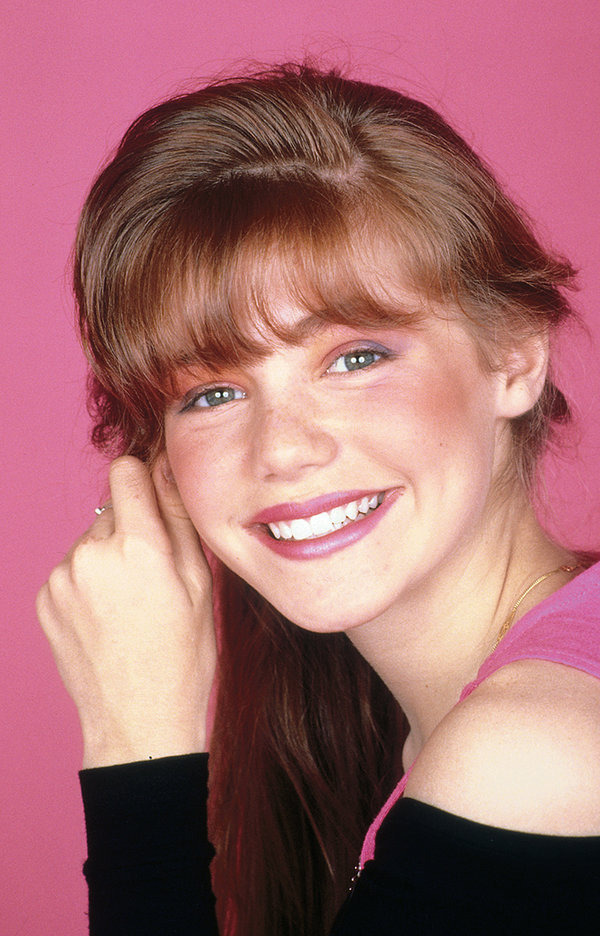
Historically, nearby Laurel Canyon has been synonymous with a certain kind of lush ‘60s acoustic-and-multipart-harmony sound, but Lewis’s musical roots spring from the ‘90s and the smart indie rock of Elliott Smith and Pavement. When she was 20 or so, her acting career wasn’t where she wanted it to be, and she saw that she needed to make a change. “I was the best friend,” she said. “I was the friend, forever. I wanted the big, juicy roles, and they didn’t come to me.” (She read for the part of Bunny in the Coen brothers’ film “The Big Lebowski,” for one, but didn’t get it.) She had known Blake Sennett, another former child actor, since she was 17, and they began writing together and eventually formed Rilo Kiley.
She and Sennett dated and broke up and kept playing together. The relationship was always fraught (Gibbard remembers Lewis screaming at Sennett over the phone during the first Postal Service tour), but Lewis said it gave her the confidence she needed to become a real songwriter. “Through my partnership with Blake, I found a voice within myself that I didn’t know I had,” she said. “It sounds kind of cheesy, but I figured out who I was.” From the first lines of the first song on Rilo Kiley’s debut record, a track called “Go Ahead,” you can hear the DNA of the musician Lewis has become nearly 15 years later — a floating, distinct voice, an unpredictable melody, a wryly subverted rhyme.
The link between songwriting and autobiography is a tantalizing but tenuous one, and Lewis prefers to preserve as much mystery as she can. But she affirms that she has never written anything more personal than “Better Son/Daughter,” one of the strongest tracks off Rilo Kiley’s second record, “The Execution of All Things.” The song is about waking up in the morning and being unable to open your eyes or get out of bed: “And your mother’s still calling you, insane and high/Swearing it’s different this time.” Eventually it opens into an anthem of wounded fortitude, the kind you can imagine cars full of young women screaming along to. The actress Anne Hathaway, one of Lewis’s close friends, told me that she still turns to that song whenever she’s struggling. “It’s become almost like a prayer,” she said.
Outside whatever veiled references she makes in her music, Lewis doesn’t talk much about her mother. She acknowledged that it was a “difficult relationship” and that she didn’t have a “traditional upbringing,” but that was about it. At one point, I referred to a report in The Boston Globe in 1992, when Lewis was 16, noting that she owned a house in Sherman Oaks and a townhouse in North Hollywood. “We lost all of that,” she said, with a blankness I hadn’t seen from her before. I asked her why. “We just lost ‘em,” she said. “I achieved a lot as a child, I supported my family, but in the end we lost it all.”
In 2004, Rilo Kiley toured with Coldplay, but Lewis was still scraping by, living in a small apartment in Silver Lake with an Iranian rockabilly musician she found on Craigslist. In her bedroom, when she wasn’t on tour, she wrote the songs that would become “Rabbit Fur Coat,” her first solo record. The idea for it came from Conor Oberst, the songwriter (also known as the frontman of Bright Eyes) who helped form Saddle Creek Records, which had put out “The Execution of All Things.” “I encouraged her,” Oberst told me. “You know, why don’t you step away from this thing that is obviously causing you a lot of distress and make a record on your own?” Sennett had already made a solo record, which upset Lewis. “I was so jealous if someone else got Blake’s musical attention,” she told me. “I was shattered by it.” She made “Rabbit Fur Coat,” she said, in part to prove that “I can do it too on my own — I don’t need you.”
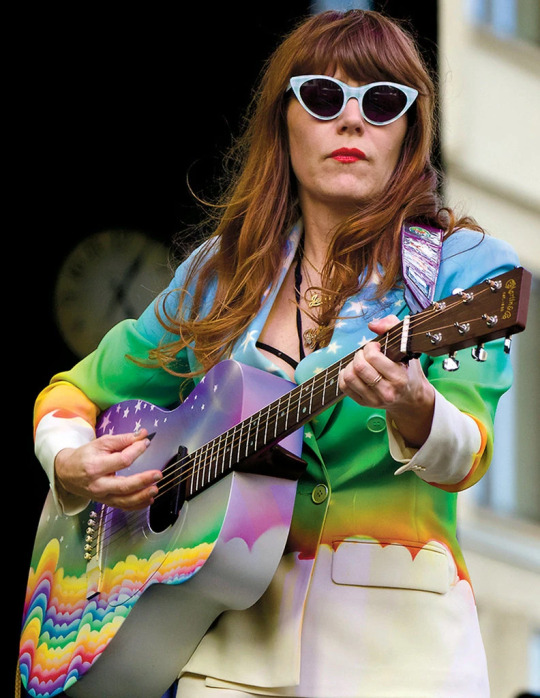
The songs on “Rabbit Fur Coat” are ethereal and haunted, rooted in deep Southern and gospel-inflected melodic traditions. On the record’s title track, Lewis’s lyrics again invite comparison with her family life:
Let’s move ahead 20 years, shall we? She was waitressing on welfare, we were living in the valley A lady says to my ma, “You treat your girl as your spouse You can live in a mansion house.”
And so we did, and I became a hundred-thousand-dollar kid . . . But I’m not bitter about it I’ve packed up my things and let them have at it And the fortune faded, as fortunes often do And so did that mansion house
Where my ma is now, I don’t know She was living in her car, I was living on the road And I hear she’s putting stuff up her nose . . .
After the record was done, Lewis went on tour with Rilo Kiley. When the band played the Showbox in Seattle in 2005, Gibbard picked her up after sound check. They’d become friends during the Postal Service tour a few years earlier. As they drove around in Gibbard’s car, Lewis played the new songs for him. “I just remember, all hyperbole aside, being completely blown away,” Gibbard said. “It was undoubtedly the best thing that she had done.” The press shared Gibbard’s reaction, and Lewis got more attention on her own than Rilo Kiley had ever gotten as a band. “Everything was so easy for the first time,” she said. “It just unfolded so naturally. And then going out on the road and touring was the most fun I’ve ever had on tour. There was no tension for the first time.” Rilo Kiley would put out one more record, but it soon became clear that it would be their last.
“I want to show you something,” Lewis said. We were talking in her kitchen about her second solo release, “Acid Tongue,” which she recorded over three weeks in 2008 at the legendary Sound City Studios in Van Nuys. The record had a bunch of special guests on it — Elvis Costello, Chris Robinson of the Black Crowes — but the most meaningful one was Lewis’s dad, who died in 2010. In the living room, she pointed out a glass vitrine on top of the piano that held one of her father’s chromatic bass harmonicas. Before the “Acid Tongue” sessions, she hadn’t spoken to her father in years, but she felt comfortable enough with the musical family she had created around her — Rilo Kiley’s drummer, Jason Boesel; Johnathan Rice; some other musicians from the Laurel Canyon set — that she thought she could handle having him around. He played on the track “Jack Killed Mom,” and the reunion helped Lewis forgive him for leaving the family all those years ago. “He was playing lounges in Alaska,” Lewis said of when she tracked him down and asked him to play on the album. “That’s why I never saw him. It was not a malicious thing. My dad was a savant. He never drove a car, he never had a bank account,” she said. “I don’t even know if he realized that he wasn’t around, you know? I think he was just playing his gigs, trying to make a living.”
“Acid Tongue” was also a step toward recording everything all at once, live, to an analog tape machine — instead of in pieces to a computer. It’s a process that Lewis has developed a devotion to, and one that the songwriter and producer Ryan Adams would push to an extreme on “The Voyager.” (After “Acid Tongue,” Lewis and Rice released “I’m Having Fun Now” in 2010, an underrated duo record that failed to get the kind of traction they hoped for.) For the last few years, Lewis had been sitting on many of the songs that would make up “The Voyager,” battling insomnia and struggling to get them down. She ran into Adams in Los Angeles and told him she had some songs she was working on, and he invited her to come by his studio, Pax-Am, on the Sunset Strip. She played a few of the tunes for him on her acoustic guitar.
‘My dad was a savant,’ Lewis said. ‘He never drove a car, he never had a bank account. I don’t even know if he realized that he wasn’t around, you know?’
“My initial impression was there were some really minimal but necessary things that had to happen,” Adams told me. “I could tell that she had sat with them a little too long.” (Lewis agrees: “I was like: ‘Dude, go for it. Help me.’ ”) On the first song that they worked on together, “She’s Not Me,” they changed the key to relax Lewis’s voice, and then Adams and his production partner, Mike Viola, strapped on electric guitars and rolled through the full song, three times, with Lewis playing and singing live with a backing band. Adams pronounced the track finished for the time being and said they would move on, without even listening back to what they’d done. “For Jenny, revisionism wouldn’t have worked,” Adams said. “The version she would play on the couch in the control room, we would just stand there, like, ‘Wow, this is classic songwriting.’ Every time. So that was sort of my mission. How do we get an ‘unmind’ vibe here and then go back later and look at these beautiful raw takes and just splash a little bit of watercolor on them.” Lewis ended up recording the bulk of the record with Adams over 10 days. (She worked on the single, “Just One of the Guys,” separately with Beck before she and Adams went into the studio together.)
“The Voyager” is an older and more direct record than her previous two. Her characters are still drinking and doing blow and cheating on each other, but there is a kind of weariness to it all. One line in particular has caught the early attention of some of her many female fans, during the bridge of “Just One of the Guys”: “There’s only one difference between you and me/When I look at myself all I can see/I’m just another lady without a baby.” She has been hesitant to acknowledge what that line specifically means to her. “I wanted to communicate some very basic things,” she told me, without saying what they were. She was already starting to regret having talked about some of her other struggles while making the record, including open discussion of the insomnia that plagued her. “Now everyone’s asking me about insomnia, which I’m terrified is going to happen to me again,” she said. “You can’t think about it too much, and everyone’s asking me about it, and I’m like, ‘I’m fine, I’m fine.’ But, [expletive], am I not going to get to sleep again?” You could hear the fear in her voice. “It’s my fault for putting it out there,” she said.
The video for “Just One of the Guys,” which got more than a million views in its first 24 hours online, was made with the actresses (and Lewis’s friends) Anne Hathaway, Brie Larson, Kristen Stewart and Tennessee Thomas. It’s an entertaining video, part Robert Palmer, part Beastie Boys, with the women spending half the time playing a sleek female backing band and then switching into male roles, clowning around in Lewis-inspired Adidas track suits and fake mustaches. Lewis, as herself, holds up a positive pregnancy test, to which Lewis-in-drag-and-fake-goatee responds, “It’s not [expletive] mine.” When she gets to the “just another lady without a baby” line, she smiles at the camera and then dances. It’s a house of mirrors, a romp through emotionally treacherous terrain.
When I visited Lewis in June, she and Rice (she calls him “Rico”) showed me an early cut of the video in the bedroom of their house, with Lewis calling out “bra shot” whenever we caught a glimpse of her cleavage. Driving down the hill toward dinner later, we got to talking, if somewhat obliquely, about the expectations of her female fans and the sexuality that is inseparable from who she is and the music she makes. She didn’t like to talk about feminism, she said, and in particular the trend of women criticizing one another for not being feminist enough: “What does it matter what I think of Lana Del Rey?” In the months before the release of “The Voyager,” Lewis has taken to wearing airbrushed suits for her live shows, rather than the sexier get-ups she used to wear onstage; she has said she feels “androgynous” these days and wants her costume to reflect that. But not always. As we made our way down the ravine, she told a story about the day President Obama came to visit a compound not far from Mint Chip. She wanted to go out for a run, but a Secret Service member stopped her and told her she needed an ID if she wanted to get back through the security cordon. “I was like, ‘Dude, I’m wearing short shorts,’ ” Lewis said. " ‘You’ll remember me.’ ”
After recording and touring mostly with men in the early days, Lewis now consistently seeks out women for her band and even tried to put together an all-female crew for the “Just One of the Guys” video, which she also directed. She said her desire to work largely with women was a response to the dissolution of her relationship with her mom. “The more I surround myself with women, the easier it is to reconcile my past in a way.” It seems to be serving a kind of psychic need, to replace the female relationship that once dominated her life with a kind of surrogate family of her choosing, a family that has stood behind her through the struggles of the last few years.
“I’m happy to see her making records,” Beck told me. “I just feel like music needs her. It needs someone doing what she’s doing. She’s got a special voice, as a writer, and then as a musician. She’s this great combination of so many things.” Conor Oberst shares that view, describing Lewis as one of the most important songwriters and performers in contemporary music. “Go see her play,” Oberst said. “Because we should all feel lucky to be around while she’s doing her magic.”
On a night in early June, at a sold-out show at the 9:30 Club in Washington, Lewis had her magic all lined up and ready to go. Backstage, she was relaxed, joking with her band and casually doing her makeup in the mirror on the wall. Just before show time, one band member disappeared, but Lewis was unperturbed. “It’s O.K.,” she said with a smile when he showed up, apologizing, just as they were about to go on. “You made it!” She took a sip of red wine out of a plastic cup and then walked up the steps to the stage.
‘I just feel like music needs her,’ Beck said. ‘It needs someone doing what she’s doing. She’s got a special voice, as a writer, and then as a musician.’
To watch Lewis perform live is to understand what Beck and Oberst and other musicians admire in her. “She turns into this other person on stage,” Gibbard said, “this unbelievably powerful performer” — and it’s true. Lewis is both a natural and a pro. Throughout the night, she had big middle-aged guys and teenage girls — “teeny little chickens,” as she called them later — singing along to every word. During the encore, Lewis sang the ballad “Acid Tongue” accompanied only by her acoustic guitar and the rest of her band grouped around a microphone behind her. “To be lonely is a habit,” Lewis sang, her voice ringing out in the near-silent room, “like smoking or taking drugs, and I’ve quit them both. . . . " The audience and her band belted along with her as she finished the line: “But man was it rough.”
It was one of those lovely moments you hope for in live music, when everything in the room connects. But it was also a kind of emblem of where Lewis has been and of where she is now. She has overcome all kinds of obstacles to get here, often with great style, but it hasn’t always been pretty. Whatever demons stole her sleep for these last few years, they’ve surely been with her forever, in one form or another. But they are also what gives such depth and soul to what she does. “I’m not looking for a cure,” Lewis sang, and as she stood in the spotlight at the 9:30 Club, nobody there would have thought she needed one.
#publication: the new york times#album: the voyager#year: 2014#mention: parent's band#mention: living in hotels#mention: mother#mention: child acting#mention: childhood#mention: insomnia#person: johnathan rice#person: blake sennett#song: better son/daughter#person: conor oberst#album: rabbit fur coat#mention: welfare#mention: childhood house#song: and that's how i choose#mention: father#mention: alaska#song: just one of the guys#mention: hypochondria#person: ben gibbard#person: beck
2 notes
·
View notes